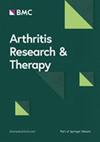特发性炎症性肌病患者体内抗 Ro-52 抗体与间质性肺病发生的关系
IF 4.9
2区 医学
Q1 Medicine
引用次数: 0
摘要
抗Ro-52抗体与各种自身免疫性疾病中的间质性肺病(ILD)有关。然而,在特发性炎症性肌病(IIMs)患者中,抗Ro-52抗体在间质性肺病中的作用还相对缺乏研究。本研究旨在探讨抗Ro-52抗体与特发性炎症性肌病患者ILD发生之间的关系。这项回顾性观察研究纳入了2018年7月至2021年1月期间在我院接受肌炎自身抗体检测并被诊断为IIMs或IIM-mimics的604名患者。在IIMs和IIM-mimics之间,以及在IIM组内有ILD和无ILD的病例之间进行了比较分析。采用逻辑回归或 Firth 逻辑回归分析来评估不同 IIM 亚组和肌炎抗体类别中发生 ILD 的风险。这项研究包括190名IIM患者和414名IIM-mimics患者。与IIM-mimics组相比,IIM患者的ILD发病率更高,并发自身免疫性疾病更多,各种肌炎自身抗体的可能性也更大。在IIM患者队列中,与无ILD的患者相比,有ILD的患者IIM发病年龄较晚,死亡率较高,抗氨基酸-tRNA合成酶(ARS)抗体出现的频率较高。任何肌炎特异性抗体(MSA)的存在都会导致罹患ILD的风险增加6倍,而MSA和抗Ro-52抗体双重阳性则会导致罹患ILD的风险增加20倍。抗ARS抗体阳性者患ILD的风险增加14倍,抗ARS和抗Ro-52抗体双重阳性者患ILD的风险增加38倍。仅抗Ro-52抗体就会使风险增加8倍。在IIM患者中,ILD的存在与较高的死亡率有关。某些自身抗体,尤其是抗-ARS和抗-Ro-52抗体,与ILD风险增加有关。在抗-ARS和抗-Ro-52抗体双重阳性的病例中,发生ILD的风险最大。本文章由计算机程序翻译,如有差异,请以英文原文为准。
Association of anti-Ro-52 antibodies with occurrence of interstitial lung disease in patients with idiopathic inflammatory myopathy
Anti-Ro-52 antibodies have been associated with interstitial lung disease (ILD) in various autoimmune diseases. However, their role in ILD among patients with idiopathic inflammatory myopathies (IIMs) is relatively underexplored. This study aimed to investigate the association between anti-Ro-52 antibodies and the occurrence of ILD in individuals with IIMs. This retrospective observational study included 604 patients who underwent myositis autoantibody testing between July 2018 and January 2021 at our hospital and were diagnosed with either IIMs or IIM-mimics. Comparative analyses were conducted between IIMs and IIM-mimics, as well as within the IIM group between cases with and without ILD. Logistic regression or Firth’s logistic regression analyses were employed to assess the risk of ILD development in different IIM subgroups and myositis antibody categories. This study included 190 patients with IIM and 414 patients with IIM-mimics. Patients with IIM demonstrated higher incidence of ILD, concurrent autoimmune disease, and a greater likelihood of various myositis autoantibodies when compared to the IIM-mimics group. Within the IIM patient cohort, those with ILD exhibited a later age of onset of IIM, an increased mortality rate, and a more frequent presence of anti-aminoacyl-tRNA synthetase (ARS) antibodies compared to those without ILD. The presence of any myositis-specific antibody (MSA) was associated with a six-fold increased risk of ILD, while dual positivity for MSA and anti-Ro-52 antibodies conferred a twenty-fold risk. Anti-ARS antibodies carried a 14-fold increased risk of ILD, which escalated to 38-fold in cases of dual positivity for anti-ARS and anti-Ro-52 antibodies. Anti-Ro-52 antibodies alone increased the risk eight-fold. Among patients with IIM, the presence of ILD was linked to higher mortality. Certain autoantibodies, notably anti-ARS and anti-Ro-52 antibodies, were associated with an increased risk of ILD. The greatest risk of ILD was observed in cases of dual positivity for anti-ARS and anti-Ro-52 antibodies.
求助全文
通过发布文献求助,成功后即可免费获取论文全文。
去求助
来源期刊

Arthritis Research & Therapy
RHEUMATOLOGY-
CiteScore
8.60
自引率
2.00%
发文量
261
审稿时长
14 weeks
期刊介绍:
Established in 1999, Arthritis Research and Therapy is an international, open access, peer-reviewed journal, publishing original articles in the area of musculoskeletal research and therapy as well as, reviews, commentaries and reports. A major focus of the journal is on the immunologic processes leading to inflammation, damage and repair as they relate to autoimmune rheumatic and musculoskeletal conditions, and which inform the translation of this knowledge into advances in clinical care. Original basic, translational and clinical research is considered for publication along with results of early and late phase therapeutic trials, especially as they pertain to the underpinning science that informs clinical observations in interventional studies.
 求助内容:
求助内容: 应助结果提醒方式:
应助结果提醒方式:


